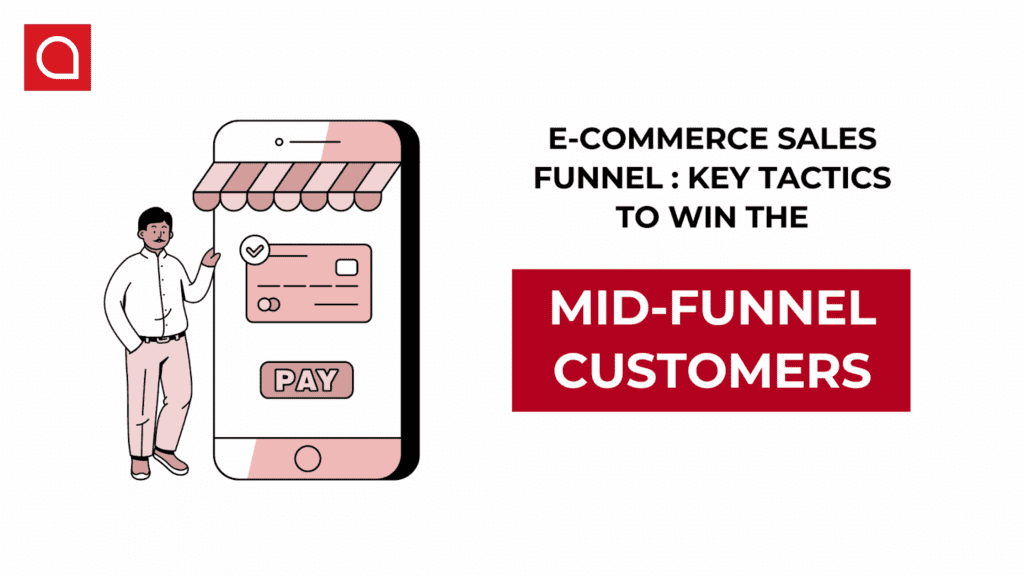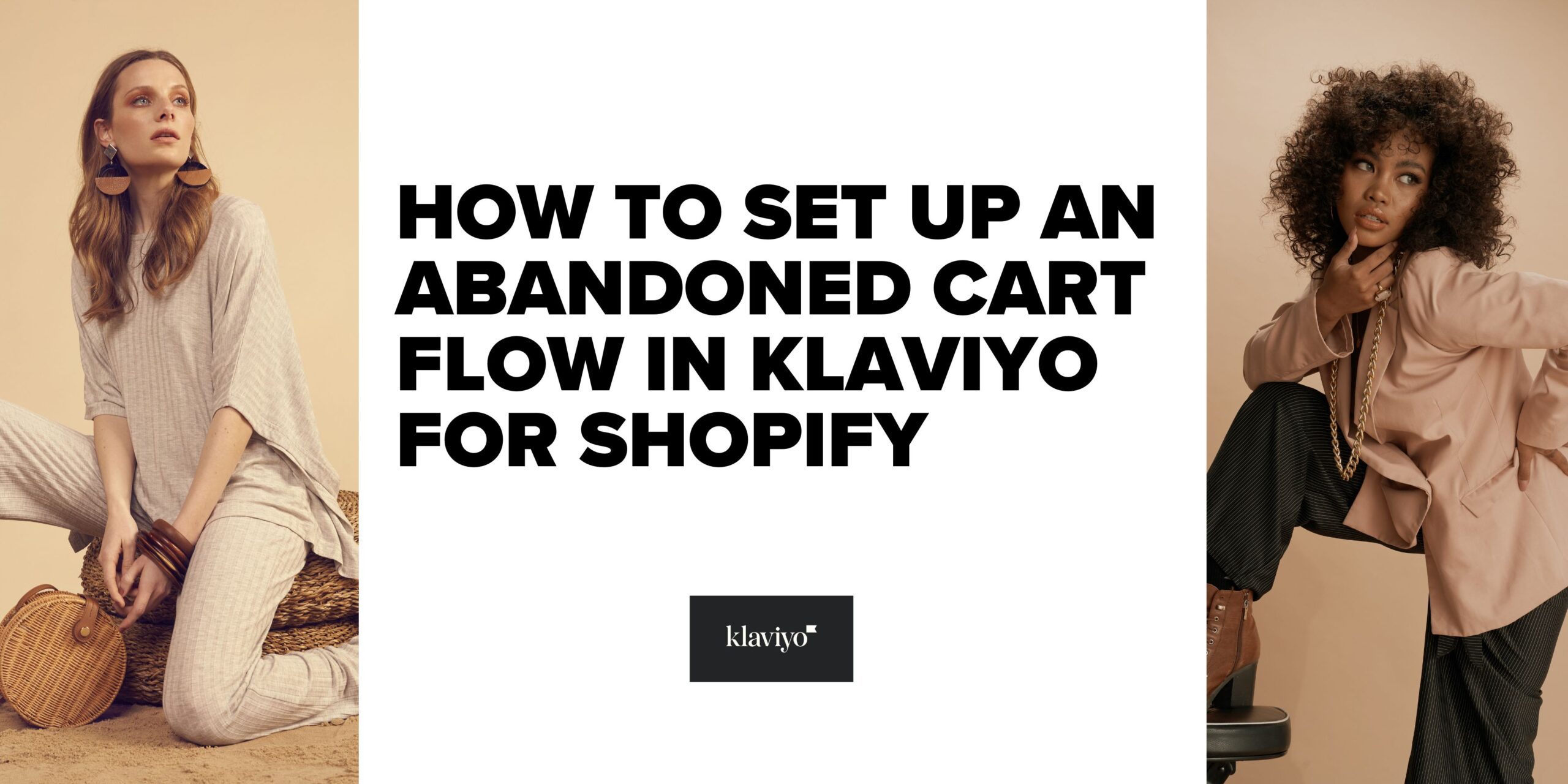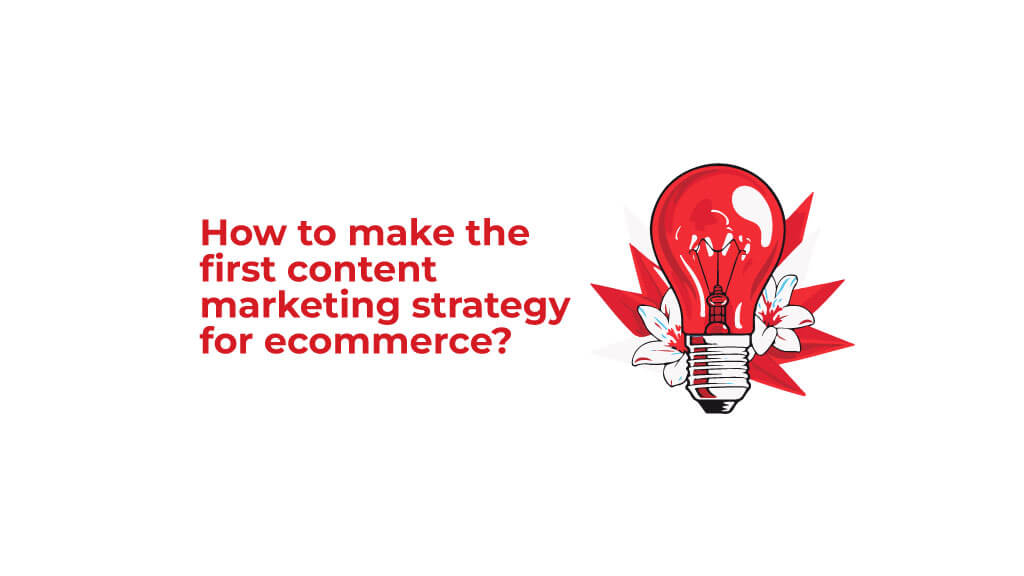Driving relevant traffic to your website is half a battle. Converting them into customers is another. The average conversion rate of an e-commerce website is only 2.5-3%. According to Matomo,
You can earn thrice your current revenue with a 2% increase in your CRO (from 1% to 3%).
But when do you have to put your CRO efforts into it? Where do your potential customers who are already aware of your product but have yet to reach a decision-making stage go? You need to convince these mid-funnel customers to seal your eCommerce sales funnel, which might be leaking.
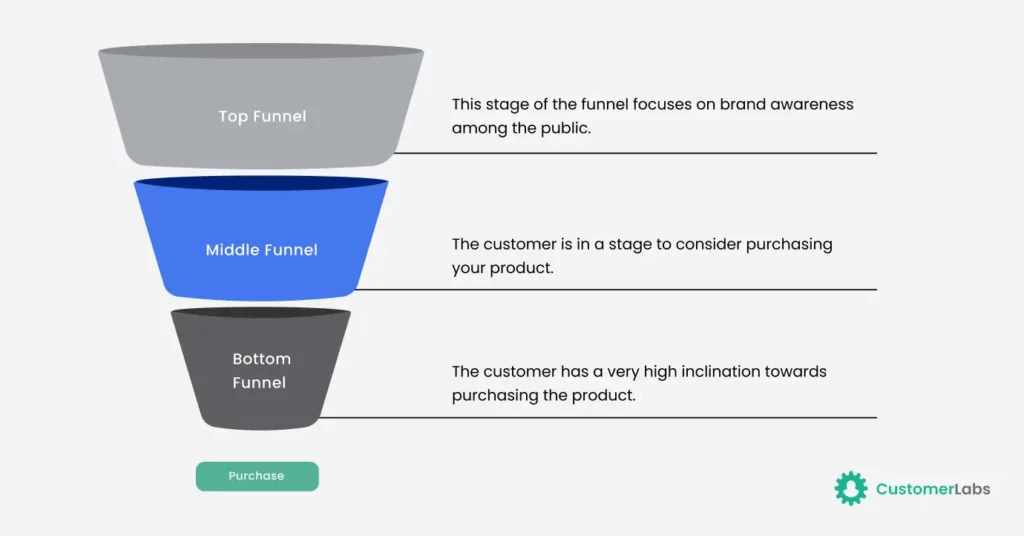
What is an eCommerce sales funnel?
An eCommerce sales funnel is a marketing concept representing the customer journey, from finding a product or service to that customer making a purchase. It’s drawn as a funnel because, at the top, dozens or thousands of people know about a product, but fewer move through the stages to end at the bottom to buy finally.

The funnel becomes narrow and narrow until the very end. Your role is to keep the funnel broad for your e-commerce business throughout the end. Simply put, you have to increase the number of sales, and to do this, you need to persuade your target audience to buy from you.
Why is it difficult to persuade the “Mid-Funnel Customers”?
Marketers find it most challenging to convert mid-funnel customers. They are in a constant process of observing other competitors and brands. They want to find a reason to buy specifically from your e-commerce brand.

Now it’s your turn to give them a solid reason to buy from you. The more you convince them to buy your products, the better your conversion funnel will be.
Customer journey in eCommerce sales funnel
Following are the steps that the customers take in an E-commerce sales funnel.
1- Awareness
At the awareness level, customers simply start discovering that they have a need or issue that needs a solution. At this stage, they first encounter brands through advertising, social media, or organic searches.
The customer will be engaging at a surface level and browsing with little or no clarity of what they want or need. In business terms, the goal of this stage is to create interest and make an attractive impression.
2- Consideration
This consideration stage is more involving. Here, the customers are informed because they have done some research. At this point, they have different options that can fulfill their needs.
They are more intentional about contacting and comparing your products and services to those of your competitors. This stage defines your brand’s unique aspects that attract customers’ attention.
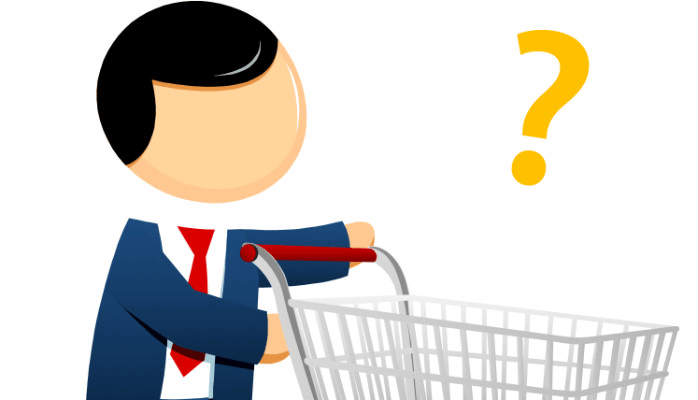
At this point, they are likely to view the websites, subscribe to e-mail newsletters, or seek more details to assist with making a proper decision. The most significant contrast between these two stages is customer intent; awareness is a discovery, while consideration is about active comparison and narrowing down options.
3- Pain points and challenges
Uncertainty among customers is among the most common pain points in the eCommerce sales funnel. Customers are always in doubt whether your product will solve their problem or not. You need to make sure that your product can help them with their situation and will also provide some additional benefits.
Another major problem for every e-commerce business is competitors, a consumer pain point. People need clarification when they view other brands’ products that provide the same features and services at the same price.
If you want to scale your eCommerce store, this guide will be your cheat sheet.
4- Building trust among customers
Trust building is critical in the mid-funnel as it governs a prospect’s conversion outcome. Customers need assurance that the solution product or brand is trustworthy, reliable, and believable enough to solve their problem.
To establish trust, testimonials from satisfied customers, social proof such as user-generated content and reviews, and full access to information on product benefits, pricing, and return policies can be used.
Why should you focus on mid-funnel optimization?
According to WebFX, 55% of marketers say finding leads that convert is one of the biggest challenges to generating new leads.
And only 2-3% of website visitors convert on their first visit ( BigCommerce). Remember, mid-funnel customers are already aware of your product. That means you have 50% more chances to convert them than the customer at the top of your eCommerce sales funnel (Awareness stage).
They are the customers who might visit your website, add a few things to the cart, and then leave.
Why because,
- They might still be thinking.
- They might need a little nudge.
- They might still need clarification on you and your competitor.
- Your offer entices them less.
Mid-funnel is your territory. You have multiple opportunities to win back or retarget your customers with the right message, approach, offer, or fear (a limited-time offer that induces FOMO).
According to SalesCycle, 73% of abandoned carts are recoverable. Because those mid-funnel customers are just a few steps away from purchasing from you, you only need the correct pitch.
Strategies that will convert your mid-funnel customers into purchasers
1- Targeted product recommendations
Targeted product recommendations create a sense of discovery in your user’s mind and increase the chances of purchase. One of our favorites, Amazon, also revealed that targeted product recommendations increase their sales by 29%.
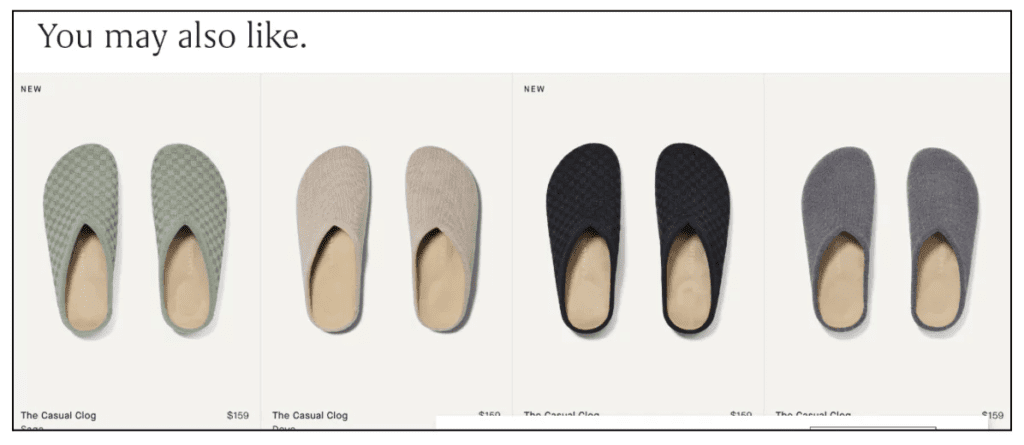
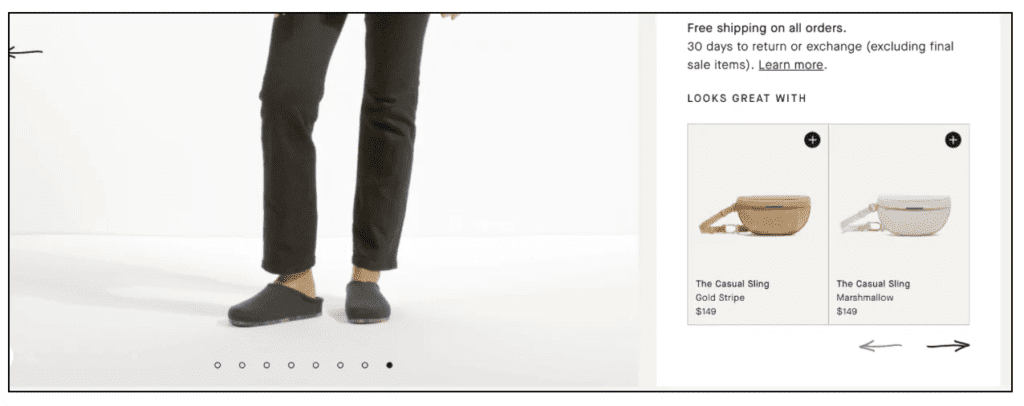
But how can we personalize the experience for every user?
With the advent of artificial intelligence, yes, anything is possible. With different tools and plugins, it’s now a piece of cake. You can use a few tools listed below to personalize your customers’ experiences and warm up your sales funnel.
Tools to personalize your e-commerce experience
1. Nosto
Key features:
- Real-time personalization
- Product recommendations
- Email marketing
- Onsite search
How it works:
Nosto uses AI to analyze customer behavior and preferences to deliver personalized product recommendations and experiences.
2. Algolia
Key features:
- Instant search
- Product recommendations
- Analytics
How it works:
Algolia’s search engine provides instant search results and personalized product recommendations based on user behavior and preferences.
3. Recomendo
Key features:
- Product recommendations
- Merchandising
- Analytics
How it works:
Recomendo uses machine learning to analyze customer data and provide personalized product recommendations.
4. Salesforce Commerce Cloud
Key features:
- E-commerce platform
- Personalization
- Customer service
How it works:
Salesforce Commerce Cloud offers a comprehensive platform for building personalized e-commerce experiences, including product recommendations.
5. Adobe Commerce (Magento)
Key features:
- E-commerce platform
- Personalization
- Marketing automation
How it works:
Adobe Commerce provides a flexible platform for creating personalized experiences, including product recommendations through its personalization features.
AI Tools:
1. TensorFlow Recommenders
Key features:
- Recommendation algorithms
- evaluation metrics
- integration with TensorFlow
How it works:
TensorFlow Recommenders provides a framework for building and training recommendation models, allowing you to create highly personalized experiences.
2. PyTorch Lightning
Key features:
- Deep learning framework
- Acceleration
- Flexibility
How it works:
PyTorch Lightning simplifies the development of deep learning models, making it easier to create personalized recommendation systems.
3. Amazon Personalize
Key features:
- Recommendation engine
- Real-time personalization
- Integration with AWS services
How it works:
Amazon Personalize is a fully managed service that uses machine learning to create personalized recommendations for your customers.
4. Google Cloud Recommendations AI
Key features:
- Recommendation engine
- Real-time personalization
- Integration with Google Cloud services.
How it works:
Google Cloud Recommendations AI is a fully managed service that uses machine learning to create personalized customer recommendations.
5. IBM Watson Recommendations
Key features:
- Recommendation engine
- Real-time personalization
- Integration with IBM Watson services.
How it works:
IBM Watson Recommendations is a fully managed service that uses machine learning to create personalized recommendations for your customers.
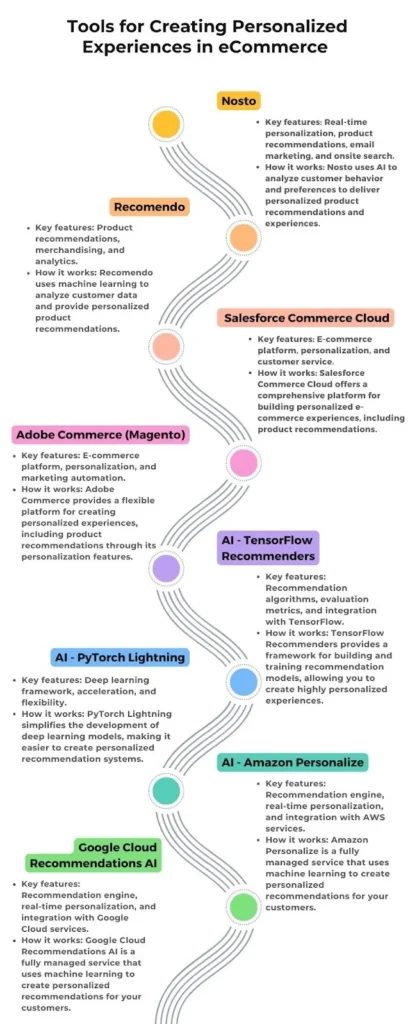
2- Compelling content marketing
A good content marketing approach is crucial to convert mid-funnel customers. Hubspot stated that the companies with blogs generate 67% more leads than those without.
- For example, by writing a blog on “5 latest fashion trends for men above 40”, you are narrowing down your specific audience base. Those who read this blog are more likely to search for fashion trends and the recommended products at the bottom of the blog or in your following email and are more likely to convert them.
- It might be your product demonstration that caught them off-guard.
- It might be a retargeting campaign, product video testimonial, bundle offer, a limited-time offer, or a free delivery.
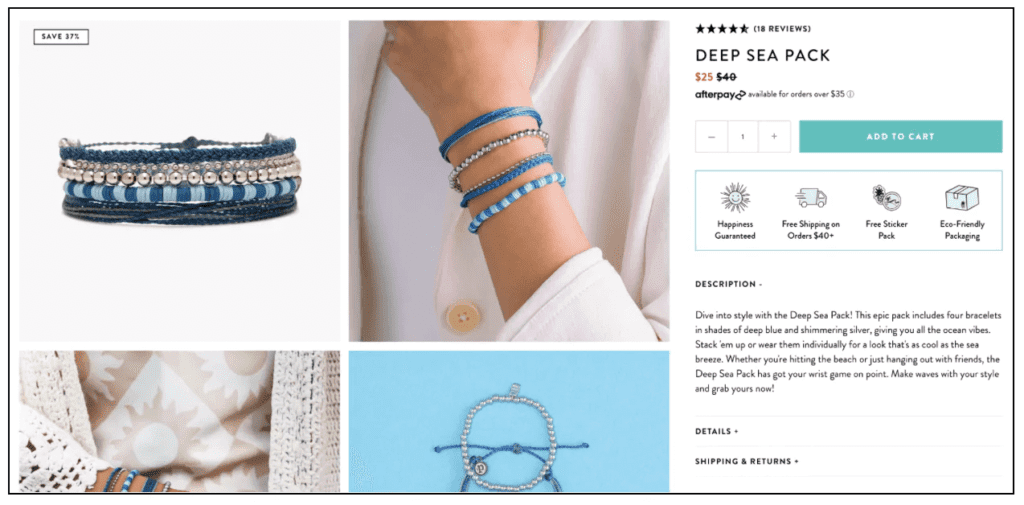
Remember, mid-funnel customers are in the consideration stage. Your focus should be on anything that convinces them to leave it and fall into the decision stage.
3- Leverage social proof
If you want to instill trust in your customers and want them to become your loyal buyers, then leverage social proof, aka testimonials and UGC (User-generated content). Because,
People trust other people more than your marketing communication.
But do you think it’s enough? No. Along with testimonials, you have a great pitch and a saleable but simple product description that entices visitors to make up their minds.
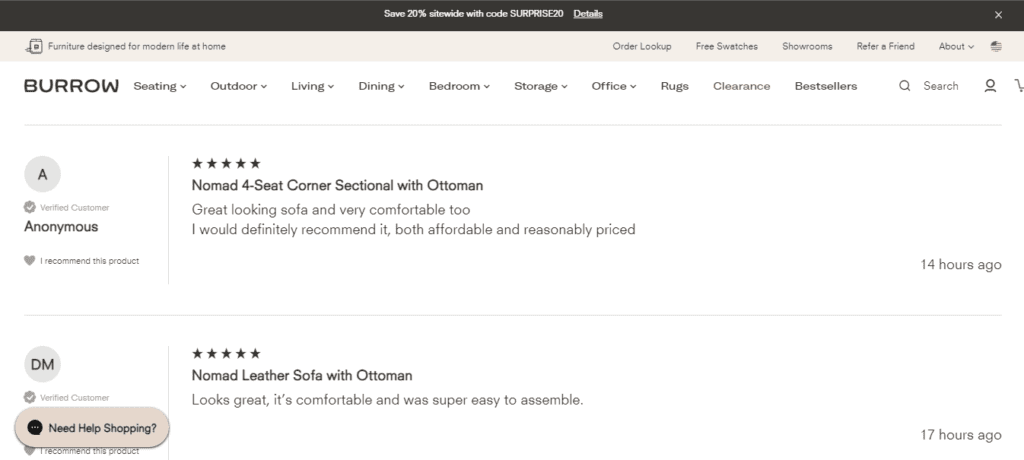
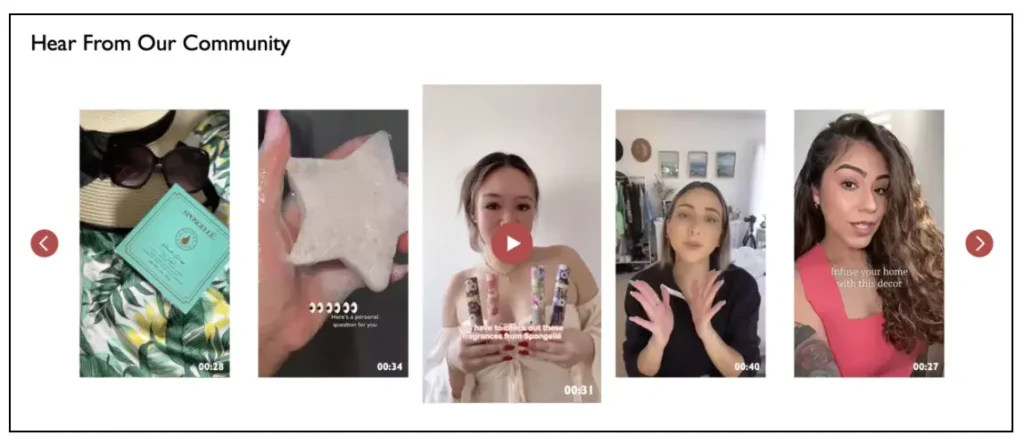

3- Retargeting campaigns
According to Invesp, retargeting campaigns can increase conversion rates by up to 104%. Why? At the consideration stage, customers are stuck in an infinite loop of exploration and evaluation. With a little nudge in the form of a win-back campaign, discount, or coupon, you can help them decide why they should choose you over your competitors.
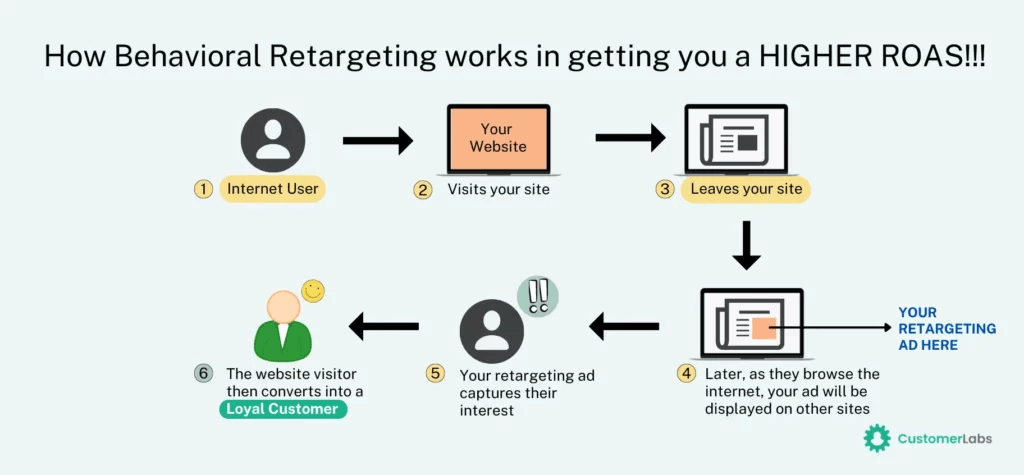
In this scenario, the retargeting ad can help you return your customers’ focus by giving them an apparent reason to buy from you.
- You can leverage predictive analysis and show them what other things they most likely be interested in.
- You can leverage Google Analytics to showcase their liked or visited products in social media apps.
- You can send them a “Complete your purchase email,” and with the few hours difference, you can send them a “limited time offer,” “discount coupon code,” or a “few left in the stock offer” to create urgency.
- 72% of millennial shoppers favor retargeting, and a discount is like an irresistible deal.
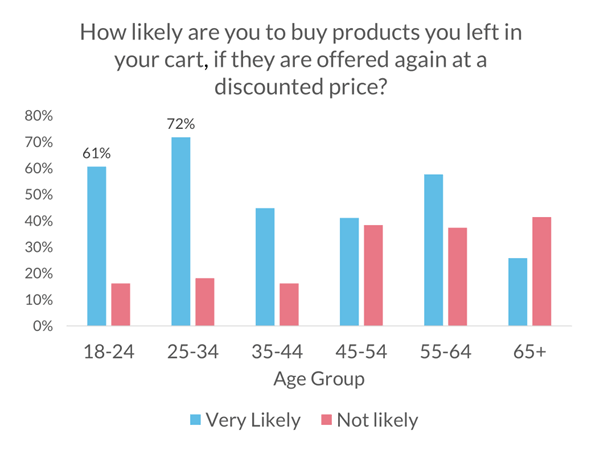
4- Live chat and chatbots
If you want to maintain a high service level, your website must have a live support system. Your customers want instant support.
- Contact support if you navigate the page and cannot add the product to the cart.
- If you want to buy a product, but the button isn’t working, hit support.
- Want more information about the “out of stock” product availability? Hit support.
- Do you want to cancel the order immediately? Hit support.

But make sure the chat option doesn’t just pop up out of nowhere. It should open only when you click it.
Example:
Add a chatbot to your website to handle basic questions about products, shipping, returns, and sizes. For detailed questions, let users talk to a chat agent via email.
5 – Optimize user experience (UX)
To optimize user experience for mid-funnel clients, you must focus on top-funnel and bottom-funnel strategies. Why? Because user experience should be streamlined.
Your customers should feel unique and at ease at every part of your funnel. According to Unbounce, a 1-second delay in loading speed can reduce your conversion rate by 7%. Optimizing your funnel at each customer journey stage could generate too much potential revenue.
Your overall content strategy should be designed to encourage repeat visits to your website, whether by email, social media ad, or blog post.
Your UX/UI should be on point, smooth, navigational, transactional, and understandable to retain your returning client.
For instance
Check your website performance regularly to identify potential usability issues. You can use Google PageSpeed Insights or Ping Dom to see how fast your site loads and optimize it accordingly.
Tools for UX optimization
- Ping Dom – To check
- Google PageSpeed Insights
- Google Analytics – To understand user behavior, geography, and pain points
- Hotjar – To understand the customer journey and interaction
- Usertesting – To conduct a usability test
- Google Mobile-Friendly Test – To check mobile optimization
Sephora
What makes Sephora great at user experience?
- Visually appealing interface
- Detailed product descriptions.

- Reviews
- Multiple payment methods
- Multiple shipping options
- Enticing CTAs
- Personalize recommendations
- Product Transparency


Zappos
Let’s take some inspiration from Zappos. They are excellent at user experience. How? They facilitate users’ purchases with free shipping, installment payments ( without interest), and multiple payment methods. That encourages users to buy their products and builds trust.
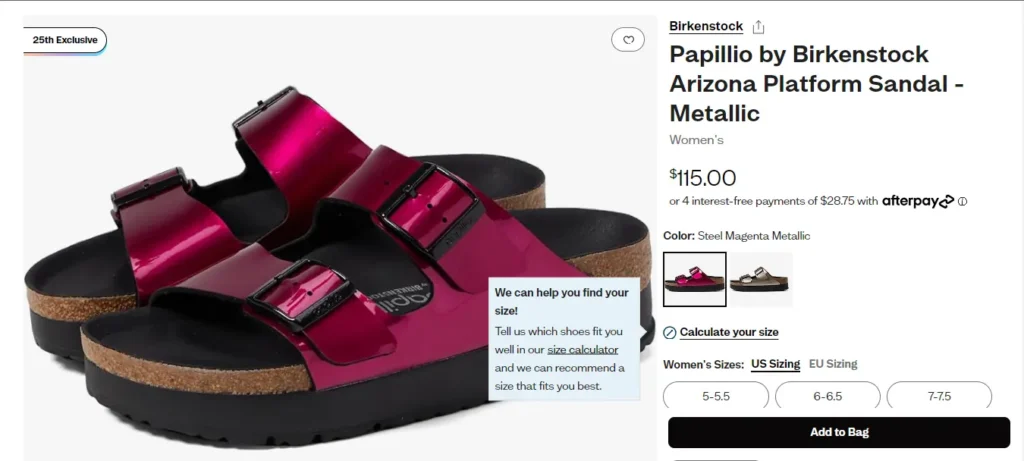


6 – Promote limited-time offers and discounts
One of the most functional strategies for increasing conversion is offering sales and discounts or Introducing a limited-time offer to encourage customers to make quick decisions.

Moreover, offering free shipping, buy-one-get-one-free, and bundle offers will help you grab the attention of your target customers.
Another advanced technique is to offer loyalty points to customers. Customers shop to collect loyalty coins, which they use to get huge discounts on future purchases.
This method narrows the profit range for e-commerce businesses, but if your strategy works, it will create a massive base of loyal customers.
7- Provide targeted offers and discounts
One of the most functional strategies for increasing conversion is providing sales and discounts. Different methods, such as introducing a deadline, will help customers make quick decisions. Moreover, offering free shipping, buy-one-get-one-free, and bundle offers will help you grab the attention of your target customers.
Another advanced technique is to offer loyal customer points. Customers engage in shopping because they want to collect loyal coins to get huge discounts in their future shopping.
This method narrows the profit range for e-commerce businesses, but if your strategy works, it will create many loyal customers.
8- Build trust with transparency and guarantees
Trust is required for the customer to transition from consideration to a purchase. Be transparent and open with pricing, shipping costs, and return policies. Providing guarantees like satisfaction guarantees or warranties can reassure the customer even further.
Using trusted payment methods and displaying trust badges, such as third-party endorsements, SSL certificates, etc., can help customers feel more confident that the webpage makes the process safe for potential purchases.
9 – Email sequence for cart abandonment
Cart abandonment is another major blockage to guiding customers down your eCommerce sales funnel. There might be multiple reasons for this.

Therefore, if you want to nurture your customers and encourage them to make a decision, you have to take care of the following:
- You must not gatekeep the shipping cost at the end of the checkout process.
- There must be guest checkout or multiple payment options available for customers’ ease.
- There should be only one step in the checkout process followed by random emails and OTPs.
- Your customer might only be interested in window shopping and considering various options from different brands. (To keep them engaged, you can send them a personalized offer or a discount coupon.)
- You should acknowledge customers’ payment security concerns.
Based on customer concerns, your email sequence should be ready to engage your cart abandoners.
First email:
Remind your customers about the products they left in their carts.
2nd email:
You can send them an email with a product or benefit guide or make them revisit the website.
3rd email:
Offer them a limited-time offer, with a few left in stock (to create urgency), or a discount (specifically for them to build an association).
Ancorrd tailor your MOFU strategies to your needs
At Ancorrd, we specialize in converting mid-funnel customers with strategies customized to our client’s audience needs. If your business is stuck at any of the above points, it’s time to find a solution.
Subscribe to our weekly newsletter to get crispy CRO tips and marketing strategies that win millions of qualified leads with minimal marketing spend.
Conclusion
Winning the mid-funnel customers in your eCommerce sales funnel is about understanding customers’ needs and addressing the concerns of hesitancy while building trust and delivering value. Lead nurturing through engagements, information content provision, personalized recommendations, incentives targeting, and social proof help businesses bring customers to conversion.
Because of these measures, brands make tremendous adjustments in middle-funnel conversion rates, where potential clients convert into loyal buyers, meaning long-term business success.
FAQs
What is an eCommerce sales funnel?
An eCommerce sales funnel shows how a customer goes from discovering a product or service to buying it. It’s shaped like a funnel because many people are aware of a product, but fewer reach the final purchase stage.
What is the eCommerce sales funnel approach?
An eCommerce sales funnel is a strategy e-commerce businesses use to identify customer behavior on their site.
What is a sales funnel?
A sales funnel, or a purchase funnel, is a visual representation of the customer journey, depicting the sales process from awareness to action.
